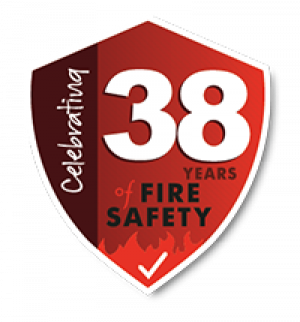What are the 5 steps of a Fire Risk Assessment?
1st Jul 2021

Are you a business owner, landlord, or property manager responsible for undertaking fire risk assessments and reducing the potential for harm caused by fire in your premises? If so, then understanding how to do this effectively is key.
As explained in our recent blog, fire risk assessments will have two parts to their documentation.
All in all, there are five steps of a Fire Risk Assessment that serve as an extremely useful guideline in order to ensure all necessary issues have been considered thoroughly. In this article we will provide detailed information on each step so that you can gain confidence when conducting a Fire Risk Assessment.
The five main steps that will be looked at in the fire risk assessment are:
1. Evaluate
After identifying fire hazards and risks associated with them, the first step in a fire risk assessment, it is important to evaluate what to do to get remove the hazard or reduce the risk of the hazard. Things to think about including in your fire safety measures are as follows:
- Are your staff all trained and know what to do in a fire?
- Are all alarm systems working and can be heard by everyone in the building?
- Have you got appropriate sufficient fire extinguishers, are they visible and are your staff trained to use them?
- Is the fire safety equipment regularly checked?
- Have you assessed the potential for heat, smoke, and fire to spread uncontrollably through your building?
- Can people use the escape routes safely?
2. Identify hazards
The second step of a fire risk assessment, this involves looking around your building(s) and making a note of anything that could possibly cause a fire. It might be worth speaking to people that spend a large amount of time in the workspace as they may have noticed things that aren’t obvious to you. This report should include all hazards in the building, including fuel sources and sources of oxygen.
3. Identify people at risk
For each hazard specified in the first step of the fire risk assessment, it is crucial to be clear about who might be harmed. This will help with managing risk.
This doesn’t have to be specific names, but you can identify groups of people who may be near to the fire hazard and how they will be left vulnerable.
Some occupants may have different requirements as to why they will be at risk, such as wheelchair users not being able to use the building lift.
4. Record
Recording all the findings of the assessment and sharing them with the occupants of your building presents the next step. This will encourage everyone to put the results of your fire risk assessment into practice. You will need to be able to show:
- Proper checks were made
- All obvious and significant hazards were dealt with
- The number of people who may be affected
- The precautions are reasonable
- The remaining risks are low
5.Review
Finally, things are likely to change regularly. It makes sense, therefore, to review what you are doing on an ongoing basis. Look at your fire risk assessment and think about whether there have been any changes?
Are there improvements you still need to make? Have other people spotted a problem? Have you learnt anything from accidents or near misses? Make sure your fire risk assessment stays up to date.
If you are responsible for conducting a fire risk assessment, understanding the process and what is required of you is crucial. By following the five steps laid out in this blog post, you can be confident that you have considered all important factors and can reduce potential harm to people and property in your premises.
If you would like more information or assistance with carrying out fire risk assessments, please do not hesitate to get in touch. Our team of experts would be happy to help.




